Product packaging for podcasts, part 2: episodic elements
If your latest podcast episode was a book, how thick would its spine be?
Podcast listeners tend to use their eyes first, and their ears second.
We’ve already talked about the importance of show-level artwork, series metadata, and ratings and reviews.
This time, let’s go one level deeper, and look at the episode-level details that make up your show’s product packaging: titles, descriptions, episodic art, and timing.
Episode titles
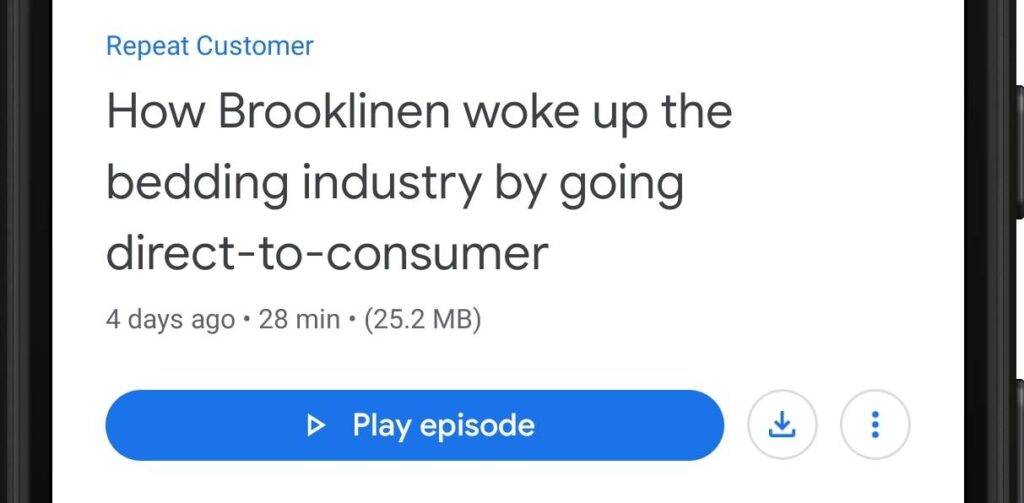
Writing good episode titles and descriptions is an art. And much like your show-level metadata, you need to write for two separate but important audiences: humans and machines.
Your episode titles need to be attention-grabbing for humans. They also need to be indexable and SEO-friendly for machines.
Do:
- Be descriptive. Include words and phrases that your audience is likely to search for.
- Remember that long episode titles often get cut off in podcast apps. Front-load the most important words.
- Consider framing your episode title as a thought-provoking question
- Include the names of prominent or well-known guests
- Use your episode title to make a promise that your episode will deliver on.
- Treat your episode titles like headlines. That’s what they are.
Don’t:
- Include your show name in your episode titles. It’s redundant.
- Include an episode or season number in your title. Use the
itunes:seasonanditunes:episodetags instead. - Try to be too clever or cryptic. “Reunion” and “The Passenger” and “Virtù e Fortuna” are good episode titles for Westworld. They’re not necessarily the best podcast episode titles.
- Stuff keywords
Like every element of your show’s product packaging, your episode title should accurately reflect what’s inside. The Tim Ferriss Show does a great job of this. When I read titles like:
- “Drew Houston — The Billionaire Founder of Dropbox”
- “Ann Miura-Ko — The Path from Shyness to World-Class Debater and Investor”
- “Tim Ferriss Goes to Maximum Security Prison”
… I have a pretty good idea of what I’ll get if I press play.
Episode descriptions
Your episode descriptions (AKA “show notes” or “episode notes”) also deserve care and attention. Use your show notes to:
- include additional detail about the contents of your episode
- mention your guests’ names, titles, and affiliations
- share hyperlinks to relevant related resources
Keep in mind that different podcast apps display show notes in different ways. Not every app supports hyperlinks or special formatting.
James Cridland put together a great roundup of how podcast show notes display in 19 different apps.
Episode artwork
If you want your show to be listed in most podcast directories, you need show-level artwork.
Episode-level artwork, on the other hand, is optional. It’s a “nice to have.”
Not all podcast apps display episodic artwork in the same way, and some podcast apps don’t support episodic artwork at all. But for apps that support it, episodic artwork is a great way to visually reinforce your show’s content. Episode-specific artwork signals attention to detail, extra care, and craft.
Some of my favorite examples come from Andrea Silenzi’s Why Oh Why. Each episode’s artwork is a variation on the main show-level branding:
Like show-level artwork, episodic artwork needs to scale gracefully, because it will be displayed at very different sizes in very different contexts. Compare the tiny episode previews in iTunes to the full device-width display in the Now Playing screen of Overcast:
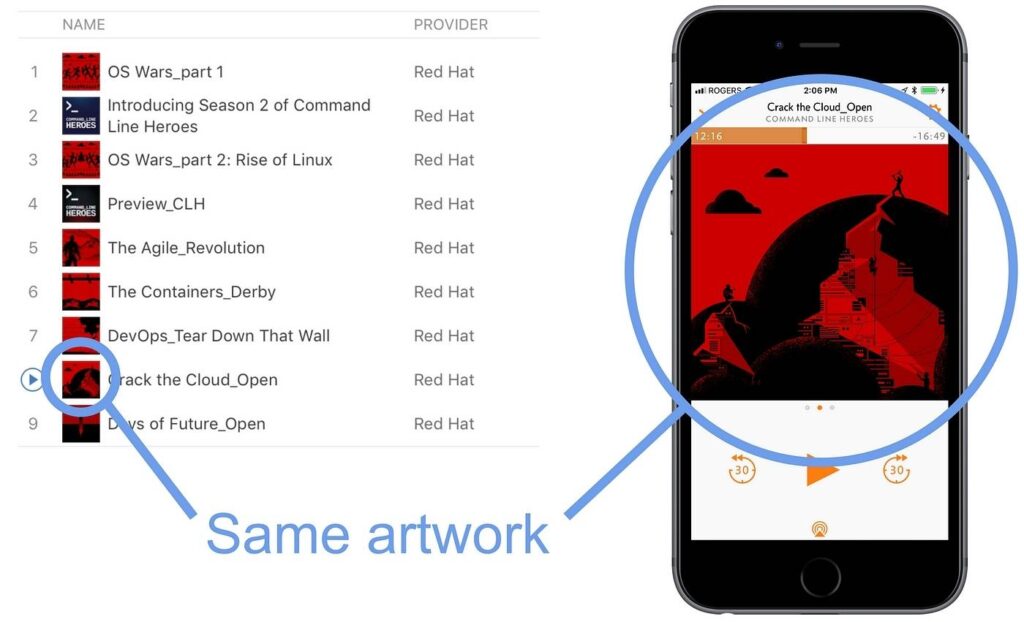
Your episodic artwork should also work well when cropped to different aspect ratios. For example, look at how Red Hat designed episodic artwork for the “Crack the Cloud Open” episode of Command Line Heroes. They created a gorgeous widescreen version that works well on their website and social media:
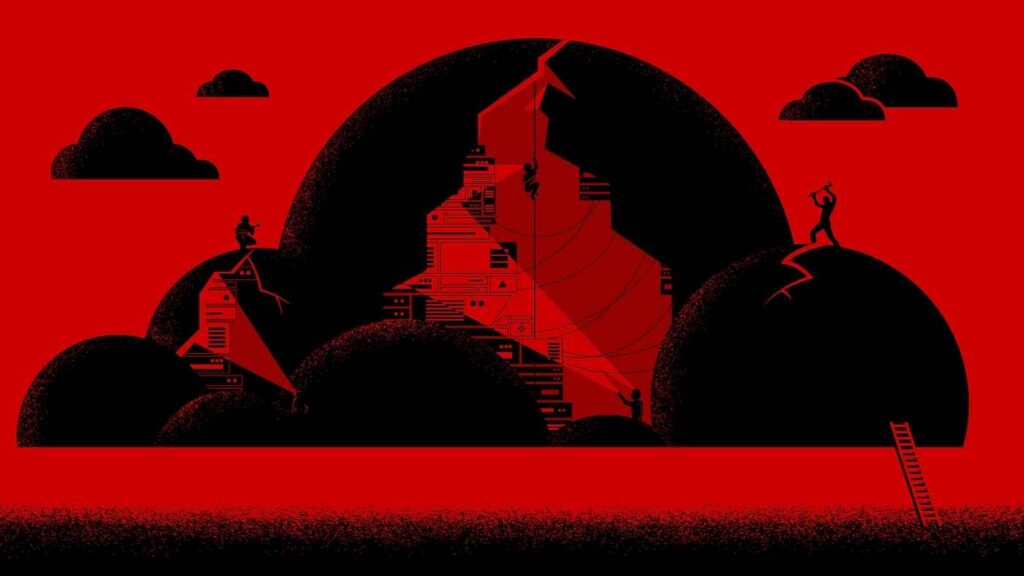
And the same image was modified to work well as a square tile for podcast apps:

Episodic art is particularly useful for social sharing. If your listeners follow you on social media, they might get tired of seeing the same series-level art over and over. Fresh art grabs the eye and is an opportunity to grab new listeners or hook existing listeners with a specific episode.
Remember: when it comes to episodic podcast artwork, versatility is the name of the game.
Episode duration and release cadence
Think about a stack of books. Some are slim volumes, like The Laws of Simplicity. Others are weighty tomes, like Infinite Jest.

The thickness of a book telegraphs its length, and the amount of time you’ll need to complete it.
Podcasts work the same way. Many apps show episode length prominently:
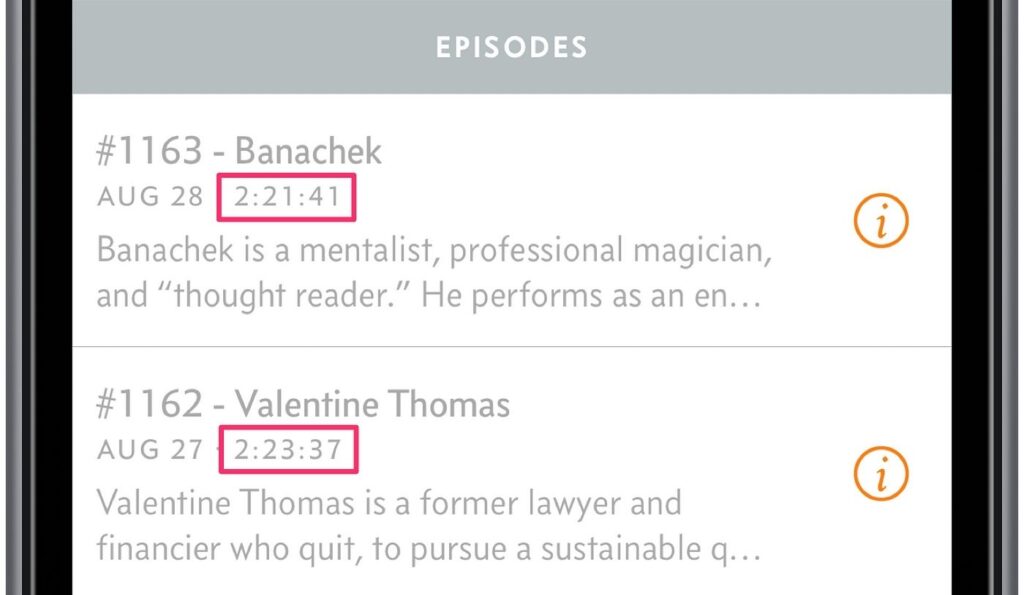
Your episode release cadence is another subtle yet important part of your podcast packaging. Are new episodes released daily? Weekly? Every two weeks? Monthly? Sporadically?
Apps like Breaker display the release cadence for every show:
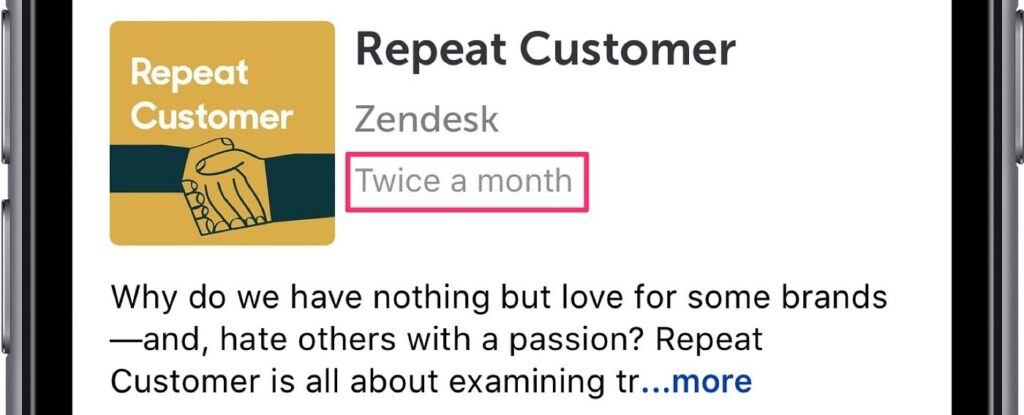
Remember, podcast listening is often built around habit and routine. Think about your audience, and design your show to fit easily into their lives.
Episode length and release are important parts of your podcast’s product packaging. Consider adding cadence details to your show description (e.g “New episodes every other Monday”), and make sure your timing choices are designed to help you serve your audience.
Remember
- Like your show-level product packaging, your episode-level metadata needs to be thoughtful and strategic
- When designing episode-level artwork, make sure you can use it in many different contexts
- Your text-based metadata (episode titles and descriptions) need to serve the needs of humans and machines
- Episode duration and cadence are often overlooked parts of your show’s product packaging. If your podcast was a book, how thick would its spine be?
Sign up for the Pacific Content Newsletter: audio strategy, analysis, and insight in your inbox. Once a week.
